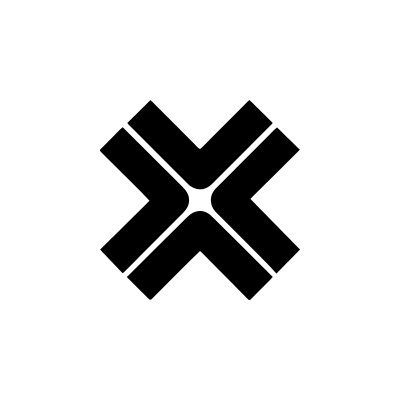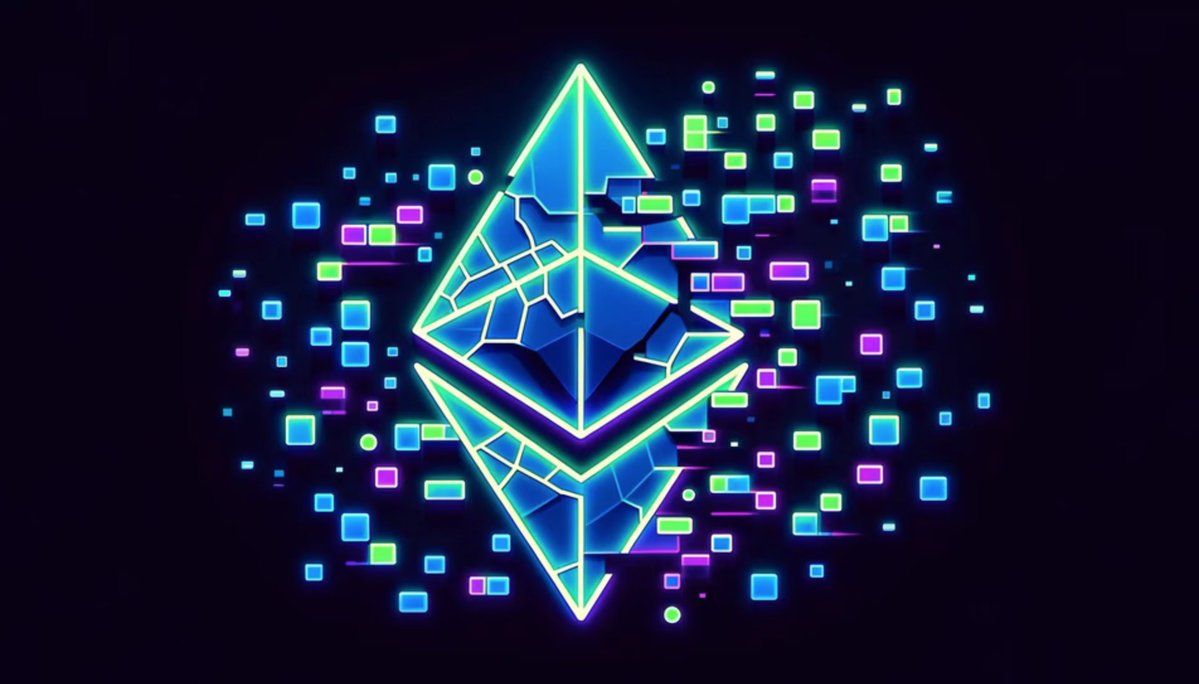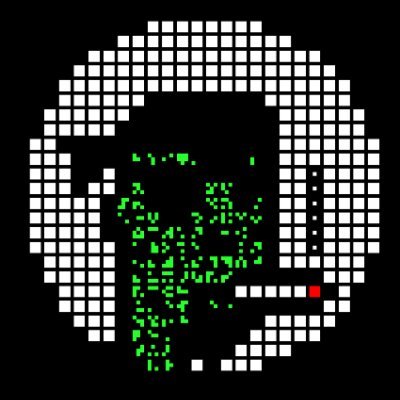This token isn’t available on the OKX Exchange. You can trade it on OKX DEX instead.

OPT
OPTITAX price

989Yj1...pump
$0.0000034712
+$0.000000074409
(+2.19%)
Price change for the last 24 hours

How are you feeling about OPT today?
Share your sentiments here by giving a thumbs up if you’re feeling bullish about the coin or a thumbs down if you’re feeling bearish.
Vote to view results
OPT market info
Market cap
Market cap is calculated by multiplying the circulating supply of a coin with its latest price.
Market cap = Circulating supply × Last price
Market cap = Circulating supply × Last price
Network
Underlying blockchain that supports secure, decentralized transactions.
Circulating supply
Total amount of a coin that is publicly available on the market.
Liquidity
Liquidity is the ease of buying/selling a coin on DEX. The higher the liquidity, the easier it is to complete a transaction.
Market cap
$3,468.27
Network
Solana
Circulating supply
999,154,643 OPT
Token holders
335
Liquidity
$6,368.30
1h volume
$0.00
4h volume
$0.00
24h volume
$0.01
OPTITAX Feed
The following content is sourced from .

oneone.eth
Ethereum's latest major update, the Pectra upgrade, officially launched on the mainnet on May 7, 2025. This marks the third major upgrade following the 2022 Merge and the 2024 Cancun upgrade (Dencun).
With the Pectra upgrade, Ethereum's price rose to $1940 per coin today. This article will detail the benefits of this upgrade for Ethereum and its impact on various projects.
First, let's discuss the upgrade content. This upgrade includes a dual-layer hard fork for the execution layer (Prague) and the consensus layer (Electra).
Starting with the execution layer, the upgrade primarily includes EIP-3074 (AUTH and AUTHCALL), EIP-5806 (delegated call improvements), EIP-2935 (historical state access optimization), EIP-7702 (account abstraction extension), and EIP-7685 (universal execution requests). The impacts are as follows: EVM performance optimization, reducing the execution costs of complex contracts by improving opcodes and gas fee mechanisms. New opcodes support more efficient cryptographic operations (e.g., elliptic curve calculations), enhancing security. Data availability improvements, with collaboration between the execution and consensus layers to optimize Blob data storage (introduced by EIP-4844), providing lower-cost data availability for Layer 2 (L2). Blob capacity doubled (from 3 to 6), directly reducing Rollup transaction fees. From an ecosystem perspective, this execution layer upgrade injects fresh vitality into ETH from various angles. EIP-3074 and EIP-7702 make wallet operations more intuitive, offering a smooth experience similar to Web2 applications, attracting non-technical users to DeFi, NFTs, and other fields. EIP-7685 and EIP-2935 simplify DApp development for developers, providing technical support for automated trading. Additionally, the L2 ecosystem benefits from the Blob capacity increase, directly reducing L2 transaction fees and optimizing cross-layer interactions to promote seamless collaboration between L1 and L2.
Now, moving to the consensus layer, the main updates include EIP-7600 (flexible staking limits), EIP-7251 (staking exit optimization), EIP-7594 (data availability sampling), and EIP-6988 (penalty mechanism improvements). EIP-7600 adjusts the validator staking limit from a fixed 32 ETH to a dynamic range of 32 ETH to 2048 ETH. This allows validators to adjust their staking amounts based on demand, lowering the entry barrier for small-scale stakers while supporting large-scale staking for improved efficiency. This attracts more individual participants to staking, enhancing network decentralization and reducing reliance on large staking pools like Lido. EIP-7251 optimizes the validator exit mechanism, shortening the exit queue wait time (from several days to a few hours, depending on network load) and introducing more efficient balance handling, allowing partial staking funds to exit quickly. This improves validator liquidity, reduces exit costs, and encourages more users to participate in staking. EIP-7594 introduces preliminary data availability sampling, paving the way for future Danksharding technology. Validators only need to verify part of the Blob data (instead of all), reducing bandwidth and storage requirements for node operations. This enhances network scalability, supports low-cost data storage for L2 Rollups, and prepares for full sharding. EIP-6988 improves the penalty mechanism for inactive or malicious validators, reducing instances of wrongful penalties. It more accurately identifies network failures and intentional attacks, improving penalty fairness. This enhances network security and incentivizes validators to remain online and honest. Regarding ecosystem impact, EIP-7600 and EIP-7251 lower the barriers for staking and exiting, attracting more retail users to participate, and the number of validators is expected to increase significantly. Flexible staking limits support individual and small-scale validators, reducing reliance on centralized staking services and promoting network decentralization. The doubling of Blob capacity directly reduces L2 data storage costs, benefiting Rollup transaction throughput and user experience. Preliminary implementation of data availability sampling provides technical support for L2's long-term scalability. Improvements in penalty mechanisms and increased validator participation enhance Ethereum's resistance to 51% attacks. More efficient exit mechanisms reduce the risks associated with locked funds for validators.
This concludes the specific content of the Pectra upgrade. Now, let's analyze its impact on various project ecosystems. First, the staking sector. This upgrade includes significant changes to staking, which greatly impact staking-related projects. The lowered personal staking threshold encourages independent validators or small staking pools to participate. This may cause some diversion for existing staking projects. However, due to the complexity of staking projects and their close collaboration with DeFi projects, staking projects are unlikely to lose too many users and will maintain their respective positions. Decentralized features of projects like Rocket Pool may attract users who value decentralization.
Impact on L2: Reduced transaction costs—L2 Rollups (e.g., Arbitrum, Optimism) see a roughly 50% reduction in data storage costs, directly lowering user gas fees. Increased throughput—more Blob space allows L2 to process more transactions, potentially increasing Optimism's TPS (transactions per second) from dozens to hundreds. EIP-7685 improves cross-chain communication, stimulating ecosystem development for emerging L2s. Especially for some DeFi projects, account abstraction (EIP-3074, EIP-7702) simplifies L2 wallet operations, attracting Web2 users to L2, benefiting platforms like Base (supported by Coinbase) that target beginners. The doubling of Blob capacity directly reduces L2 gas fees, benefiting DeFi users on Arbitrum and Optimism (e.g., Uniswap, Aave) with lower transaction costs.
Impact on abstract account projects: This upgrade allows external accounts (EOA) to authorize transactions via smart contracts, supporting batch transactions, gas sponsorship (third-party gas payments), and custom signature logic. Projects focused on abstract accounts can develop better without technical constraints. Users face lower entry barriers, potentially leading to more user growth for such projects.
Now, let's discuss risks. The authorization mechanisms introduced by EIP-3074 and EIP-7702 may be exploited by malicious contracts, such as phishing attacks that trick users into granting authorization and stealing funds. Wallet projects need to strengthen security audits. EIP-7600 allows validators to stake 32-2048 ETH, which may lead to further concentration of funds in large staking pools like Lido due to their higher capital efficiency. Ethereum's decentralization may decrease, increasing risks of 51% attacks or governance manipulation. Related projects should encourage small staking pools and decentralized governance. Regulatory risks also exist. Pectra's staking optimizations (EIP-7600) and AA features may attract regulatory scrutiny, especially in the U.S., where liquid staking (e.g., Lido) and smart accounts may be considered financial services and face compliance requirements.
These are the main contents and impacts of this upgrade. Give it a like and save it for later, and show some support!
Show original23.22K
1

Axelar Network
Scaling solved fees, now we need to solve fragmentation.
But ETH doesn’t need more bridges, it needs one standard.
ERC-7786 delivers that ⤵️

Sergey Gorbunov
Scaling via L2s has become Ethereum's biggest problem:
50+ isolated rollups with fragmented liquidity and complex bridges.
Cross-chain solutions exist, but we need standards to unite them.
Here's how interop standards could revitalize ETH:
First, let's understand how we got here.
Ethereum had a scaling problem during the last cycle. Gas fees peaked at $100+ per transaction as users competed for block space.
Layer 2 rollups emerged to fix this issue, and they worked.
Base, Arbitrum, Optimism, and dozens of others successfully expanded Ethereum's capacity, with fees now counted in cents.
But they also created a new problem: Fragmentation.
Users now must navigate between isolated ecosystems that don't talk to each other. The real-world impact is significant. Imagine you have funds on Optimism but want to use an app on Base. You need to:
• Find a bridge
• Pay expensive fees
• Wait for finality periods
• Manage multiple wallets
The user experience is challenging, to say the least. But interoperability standards are currently being developed to unify the Ethereum ecosystem.
Generally, I am not a fan of standards; however, the lack of standards in this situation has resulted in repeated bottlenecks for developers.
Let's break some of them down:
1. The first interop standard on our list is Across and Uniswap's intent standard (ERC-7683).
Intents allow users to express what they want (swap token X on @base
for token Y on @arbitrum), and then "solvers" will compete to fulfill the order in the most optimized path.
Here's how it works:
When you request a cross-chain swap, a decentralized network of "solvers" competes to fulfill your order. They front the liquidity and provide quick fulfillment, while final settlement occurs later via secure cross-chain messaging.
This is fundamentally different from traditional bridges, where:
• You lock tokens in a contract on chain A
• Wait for confirmation (often minutes or hours)
• Then get wrapped tokens on chain B
Intent-based approaches put user experience first, with settlement happening afterward.
The ERC-7683 standard aims to ensure that protocols share information in a consistent language so that any solver in the decentralized network can understand the order and carry it out.
And ERC-7683 isn't the only standard trying to tackle cross-chain fragmentation.
2. There are multiple other standards trying to stitch isolated rollups together.
Here is a brief breakdown:
• RIP-7755: Enables trustless transactions between rollups via a permissionless network of fulfillers.
• RIP-7859: Exposes Layer 1 origin information inside Layer 2 environments, improving cross-chain data verification.
• ERC-7828: Introduces chain-specific addresses in ENS, reducing confusion when sending assets across different chains.
Each of these standards is a step toward solving isolated ecosystems. However they all face the same underlying issue:
We still need a common language for chains to communicate at the base layer. Without that, fragmentation persists.
To truly scale Ethereum's app layer across chains, the above standards and developers need a shared language.
3. That brings us to ERC-7786, a proposed universal interface for messaging between blockchains.
It’s like agreeing on a mailing address format, so that UPS, FedEx, or DHL can all deliver your package.
Proposed by @OpenZeppelin and @interop_labs (the developer of the @axelar Network), ERC-7786 is minimal by design, built to be lightweight and modular. The goal is to reduce vendor lock-in and enable true cross-chain native applications.
ERC-7786 standardizes:
• Message field encoding
• Sending & receiving logic
• Security guarantees
• Optional “attributes” for protocol-specific behavior
The standard is designed to be flexible, so developers can write code once and deploy it across multiple chains (including L2s and non-EVM environments).
"Chain abstraction" remains the ultimate goal:
• Users shouldn't need to know which chain they're on.
• Wallets should work everywhere.
• Assets should be able to move freely.
Right now, capital is inefficiently locked in dozens of bridge contracts. Meanwhile, developers waste time learning multiple proprietary interfaces while users bear the cost of complexity.
Standardization creates a rising tide that lifts all boats.
In the history of technology, open standards consistently accelerate ecosystem growth.
TCP/IP united the internet, HTTP standardized the web, and now, interop standards will reunite Ethereum's ecosystem.

17.23K
159



Sergey Gorbunov
Scaling via L2s has become Ethereum's biggest problem:
50+ isolated rollups with fragmented liquidity and complex bridges.
Cross-chain solutions exist, but we need standards to unite them.
Here's how interop standards could revitalize ETH:
First, let's understand how we got here.
Ethereum had a scaling problem during the last cycle. Gas fees peaked at $100+ per transaction as users competed for block space.
Layer 2 rollups emerged to fix this issue, and they worked.
Base, Arbitrum, Optimism, and dozens of others successfully expanded Ethereum's capacity, with fees now counted in cents.
But they also created a new problem: Fragmentation.
Users now must navigate between isolated ecosystems that don't talk to each other. The real-world impact is significant. Imagine you have funds on Optimism but want to use an app on Base. You need to:
• Find a bridge
• Pay expensive fees
• Wait for finality periods
• Manage multiple wallets
The user experience is challenging, to say the least. But interoperability standards are currently being developed to unify the Ethereum ecosystem.
Generally, I am not a fan of standards; however, the lack of standards in this situation has resulted in repeated bottlenecks for developers.
Let's break some of them down:
1. The first interop standard on our list is Across and Uniswap's intent standard (ERC-7683).
Intents allow users to express what they want (swap token X on @base
for token Y on @arbitrum), and then "solvers" will compete to fulfill the order in the most optimized path.
Here's how it works:
When you request a cross-chain swap, a decentralized network of "solvers" competes to fulfill your order. They front the liquidity and provide quick fulfillment, while final settlement occurs later via secure cross-chain messaging.
This is fundamentally different from traditional bridges, where:
• You lock tokens in a contract on chain A
• Wait for confirmation (often minutes or hours)
• Then get wrapped tokens on chain B
Intent-based approaches put user experience first, with settlement happening afterward.
The ERC-7683 standard aims to ensure that protocols share information in a consistent language so that any solver in the decentralized network can understand the order and carry it out.
And ERC-7683 isn't the only standard trying to tackle cross-chain fragmentation.
2. There are multiple other standards trying to stitch isolated rollups together.
Here is a brief breakdown:
• RIP-7755: Enables trustless transactions between rollups via a permissionless network of fulfillers.
• RIP-7859: Exposes Layer 1 origin information inside Layer 2 environments, improving cross-chain data verification.
• ERC-7828: Introduces chain-specific addresses in ENS, reducing confusion when sending assets across different chains.
Each of these standards is a step toward solving isolated ecosystems. However they all face the same underlying issue:
We still need a common language for chains to communicate at the base layer. Without that, fragmentation persists.
To truly scale Ethereum's app layer across chains, the above standards and developers need a shared language.
3. That brings us to ERC-7786, a proposed universal interface for messaging between blockchains.
It’s like agreeing on a mailing address format, so that UPS, FedEx, or DHL can all deliver your package.
Proposed by @OpenZeppelin and @interop_labs (the developer of the @axelar Network), ERC-7786 is minimal by design, built to be lightweight and modular. The goal is to reduce vendor lock-in and enable true cross-chain native applications.
ERC-7786 standardizes:
• Message field encoding
• Sending & receiving logic
• Security guarantees
• Optional “attributes” for protocol-specific behavior
The standard is designed to be flexible, so developers can write code once and deploy it across multiple chains (including L2s and non-EVM environments).
"Chain abstraction" remains the ultimate goal:
• Users shouldn't need to know which chain they're on.
• Wallets should work everywhere.
• Assets should be able to move freely.
Right now, capital is inefficiently locked in dozens of bridge contracts. Meanwhile, developers waste time learning multiple proprietary interfaces while users bear the cost of complexity.
Standardization creates a rising tide that lifts all boats.
In the history of technology, open standards consistently accelerate ecosystem growth.
TCP/IP united the internet, HTTP standardized the web, and now, interop standards will reunite Ethereum's ecosystem.

40.22K
75
OPT price performance in USD
The current price of optitax is $0.0000034712. Over the last 24 hours, optitax has increased by +2.19%. It currently has a circulating supply of 999,154,643 OPT and a maximum supply of 999,154,643 OPT, giving it a fully diluted market cap of $3,468.27. The optitax/USD price is updated in real-time.
5m
+0.00%
1h
+0.00%
4h
+0.00%
24h
+2.19%
About OPTITAX (OPT)
OPT FAQ
What’s the current price of OPTITAX?
The current price of 1 OPT is $0.0000034712, experiencing a +2.19% change in the past 24 hours.
Can I buy OPT on OKX?
No, currently OPT is unavailable on OKX. To stay updated on when OPT becomes available, sign up for notifications or follow us on social media. We’ll announce new cryptocurrency additions as soon as they’re listed.
Why does the price of OPT fluctuate?
The price of OPT fluctuates due to the global supply and demand dynamics typical of cryptocurrencies. Its short-term volatility can be attributed to significant shifts in these market forces.
How much is 1 OPTITAX worth today?
Currently, one OPTITAX is worth $0.0000034712. For answers and insight into OPTITAX's price action, you're in the right place. Explore the latest OPTITAX charts and trade responsibly with OKX.
What is cryptocurrency?
Cryptocurrencies, such as OPTITAX, are digital assets that operate on a public ledger called blockchains. Learn more about coins and tokens offered on OKX and their different attributes, which includes live prices and real-time charts.
When was cryptocurrency invented?
Thanks to the 2008 financial crisis, interest in decentralized finance boomed. Bitcoin offered a novel solution by being a secure digital asset on a decentralized network. Since then, many other tokens such as OPTITAX have been created as well.
Monitor crypto prices on an exchange
Watch this video to learn about what happens when you move your money to a crypto exchange.
Disclaimer
The social content on this page ("Content"), including but not limited to tweets and statistics provided by LunarCrush, is sourced from third parties and provided "as is" for informational purposes only. OKX does not guarantee the quality or accuracy of the Content, and the Content does not represent the views of OKX. It is not intended to provide (i) investment advice or recommendation; (ii) an offer or solicitation to buy, sell or hold digital assets; or (iii) financial, accounting, legal or tax advice. Digital assets, including stablecoins and NFTs, involve a high degree of risk, can fluctuate greatly. The price and performance of the digital assets are not guaranteed and may change without notice.
OKX does not provide investment or asset recommendations. You should carefully consider whether trading or holding digital assets is suitable for you in light of your financial condition. Please consult your legal/tax/investment professional for questions about your specific circumstances. For further details, please refer to our Terms of Use and Risk Warning. By using the third-party website ("TPW"), you accept that any use of the TPW will be subject to and governed by the terms of the TPW. Unless expressly stated in writing, OKX and its affiliates (“OKX”) are not in any way associated with the owner or operator of the TPW. You agree that OKX is not responsible or liable for any loss, damage and any other consequences arising from your use of the TPW. Please be aware that using a TPW may result in a loss or diminution of your assets. Product may not be available in all jurisdictions.
OKX does not provide investment or asset recommendations. You should carefully consider whether trading or holding digital assets is suitable for you in light of your financial condition. Please consult your legal/tax/investment professional for questions about your specific circumstances. For further details, please refer to our Terms of Use and Risk Warning. By using the third-party website ("TPW"), you accept that any use of the TPW will be subject to and governed by the terms of the TPW. Unless expressly stated in writing, OKX and its affiliates (“OKX”) are not in any way associated with the owner or operator of the TPW. You agree that OKX is not responsible or liable for any loss, damage and any other consequences arising from your use of the TPW. Please be aware that using a TPW may result in a loss or diminution of your assets. Product may not be available in all jurisdictions.


























